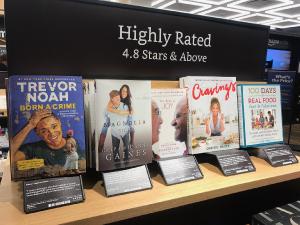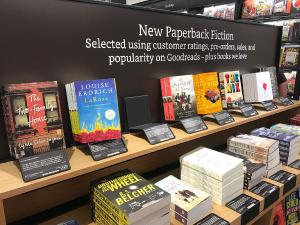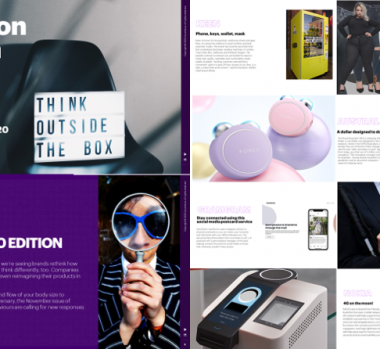Amazon Buys Whole Foods: The Impact for CPG
Since the surprise announcement of Amazon’s deal to buy Whole Foods Market, a lot of conversation has focused on the potential impact on other retailers — in particular, Amazon’s intent to automate the labor of a supermarket by eliminating checkouts with its ‘Just Walk Out’ technology.
But what about the impact on CPG companies and manufacturers providing products to retailers?
For a glimpse of what’s ahead, look at Amazon Books stores, not at automated checkout.
For CPG companies, it’s better to look at Amazon Books stores (of which there are currently 6) for indications of how this may affect your business. These stores still have a checkout — but the way in which products are managed, merchandised and sold is unique.
We see four potential impacts to business that CPG companies should consider:
1. Reviews-driven merchandising
Regular supermarkets and drug stores already use lots of data — primarily relying on purchase data, often supported by loyalty programs.
Amazon Books adds to this equation reviews data — a much more detailed understanding on what consumers actually think of a product, not just when and where they bought it. With reviews, Amazon knows whether products actually perform (or don’t) and why. As a result, every aspect of an Amazon Books store is driven by data. This includes the way products are laid out, which are displayed most prominently, and which are stocked in the first place.

The Amazon Books store only stocks products with ratings over 4.0 Stars
Expect other retailers to begin experimenting with this approach — including Walmart, which recently bought Amazon’s emerging competitor Jet.com.
2. Increased pressure to offer great experiences
CPG companies are going to have to double down on creating a great overall experience — going beyond the look of the packaging, to reflect how well the product is used, stored and disposed of.
Walk into an Amazon Books store, and you’ll see that nearly all the products are rated 4.0 Stars or above. Also, every product has its reviews rating displayed alongside it. If retailers such as Whole Foods managed stores on the basis of reviews, they may well look at what they stock differently. A product that sells well but gets a 3.5 Star average rating (perhaps because there are few better options in the category) could face pressure.
Recently, we’ve been working with CPG companies to understand their competitive positioning by mining online reviews. Expect this analysis to become increasingly important.
3. Ecommerce success will drive bricks and mortar success
People make decisions differently when they are buying online. They’re much more driven by product attributes, and some argue they make more informed decisions (although e-commerce also offers many opportunities for impulsive purchase).
Zevia sodas — stevia-sweetened, zero calorie sodas — are a great example of a product that outperforms the established competition in an e-commerce world.
“Amazon’s list of “most wished for” soft drinks — a ranking that tracks products on customers wishlists and gift registries — had Zevia at №1.” — Bloomberg
Reviews data are also driving decisions around how stores are organized where future success at bricks and mortar will be shaped by how well a product performs e-commerce. You can already see this at Amazon Books, where the hot ‘new releases’ are based partly on what’s on ‘wish lists’. This will also likely mean a shift for retailers towards products that are habit-forming online and offline — ripe for selling subscriptions.

The Amazon Books store sells products selected using customer ratings, pre-orders, sales, and popularity on its ‘social cataloging’ site, Goodreads
4. New data-driven store formats
Don’t expect Amazon to simply automate and add reviews data to a regular Whole Foods store, and then leave the store looking the same. CPG companies should expect to see a lot of experimentation in new store formats armed with reviews data. This could include: ‘hybrid’ locations that offer purchases as well as pick-up of e-commerce orders, a small-format ‘everyday subscription’ store that just sells frequently purchased, highly-reviewed items, or a store within a store that sells products that are trending in the local area via e-commerce — providing a new way for emerging brands and products to get exposure in mainstream stores.
If you’d like to know more about how to prepare for a reviews-driven future, please contact us!



